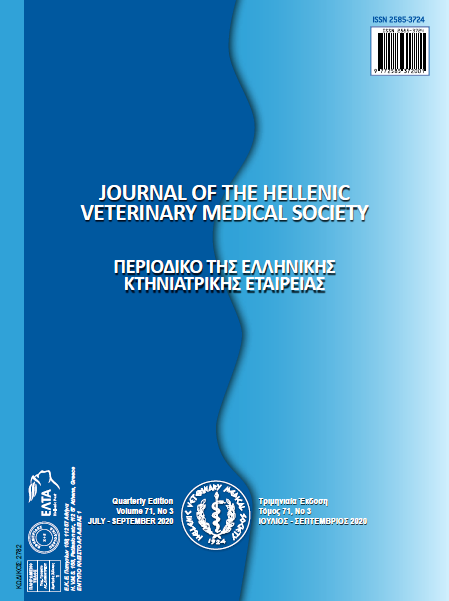Effect of trans-resveratrol or ubiquinol supplementation on the sperm morphology of CD-1 mice subjected to forced swimming
Abstract
This study was undertaken to assess the effect of a three-minute forced swimming protocol for 50 days, with and without antioxidant administration on sperm morphology in CD-1 mice. Seventy-five mice were randomly allocated to one of the following five groups: no exercise (control group; CG), swimming without antioxidant administration (EX), swimming with trans-resveratrol administration (EX-Resv), swimming with ubiquinol and excipient administration (Kaneka´s ubiquinol) (EX-Ubiq), and swimming with just only the excipient for Kaneka´s ubiquinol administration (EX-Excp). The EX group showed that 53.03±4.83% of sperm had abnormal morphology, with significant differences with regards to CG (46.47±10.57%) (p<0.05). The number of sperm with abnormal morphology decreased in all groups treated with either antioxidants or with excipient; this was most noticeable in EX-Ubiq (p<0.05). The percentage of midpiece and tail, as well as multiple anomalies were greater in EX than in CG (p<0.05). While both antioxidants, as well as the excipient, decreased midpiece and head anomalies, only trans-resveratrol and ubiquinol had an effect on multiple anomalies. Furthermore, only trans-resveratrol had an effect upon tail anomalies. The imposed exercise caused alterations in CD-1 mice sperm morphology, and antioxidant treatment seems suitable to decrease morphological anomalies. Both trans- resveratrol and ubiquinol were effective in decreasing simple as well as multiple sperm anomalies.
Article Details
- Zitationsvorschlag
-
VAAMONDE Δ., SÁNCHEZ DE MEDINA, A., CORTÉS Β., DÍAZ Α., & RODRÍGUEZ Ι. (2020). Effect of trans-resveratrol or ubiquinol supplementation on the sperm morphology of CD-1 mice subjected to forced swimming. Journal of the Hellenic Veterinary Medical Society, 71(3), 2349–2356. https://doi.org/10.12681/jhvms.25096
- Ausgabe
- Bd. 71 Nr. 3 (2020)
- Rubrik
- Research Articles

Dieses Werk steht unter der Lizenz Creative Commons Namensnennung - Nicht-kommerziell 4.0 International.
Authors who publish with this journal agree to the following terms:
· Authors retain copyright and grant the journal right of first publication with the work simultaneously licensed under a Creative Commons Attribution Non-Commercial License that allows others to share the work with an acknowledgement of the work's authorship and initial publication in this journal.
· Authors are able to enter into separate, additional contractual arrangements for the non-exclusive distribution of the journal's published version of the work (e.g. post it to an institutional repository or publish it in a book), with an acknowledgement of its initial publication in this journal.
· Authors are permitted and encouraged to post their work online (preferably in institutional repositories or on their website) prior to and during the submission process, as it can lead to productive exchanges, as well as earlier and greater citation of published work.



